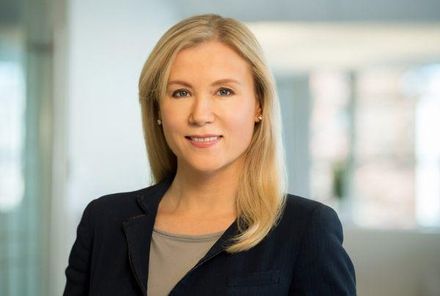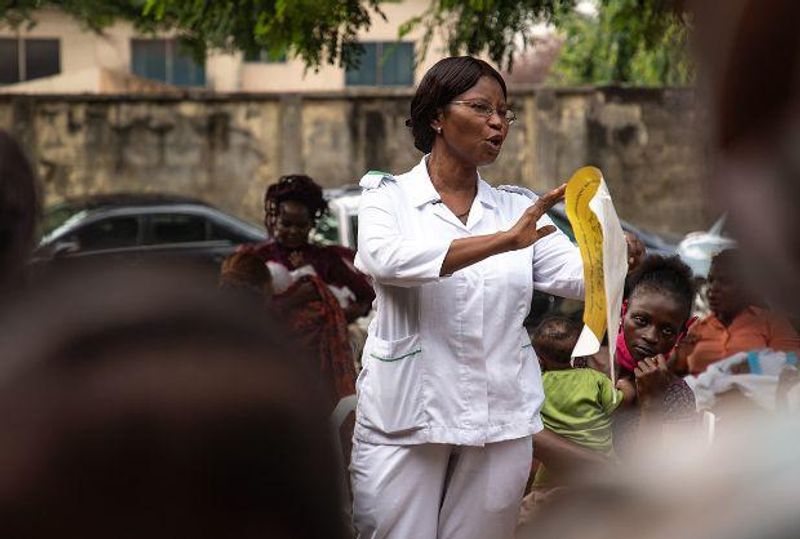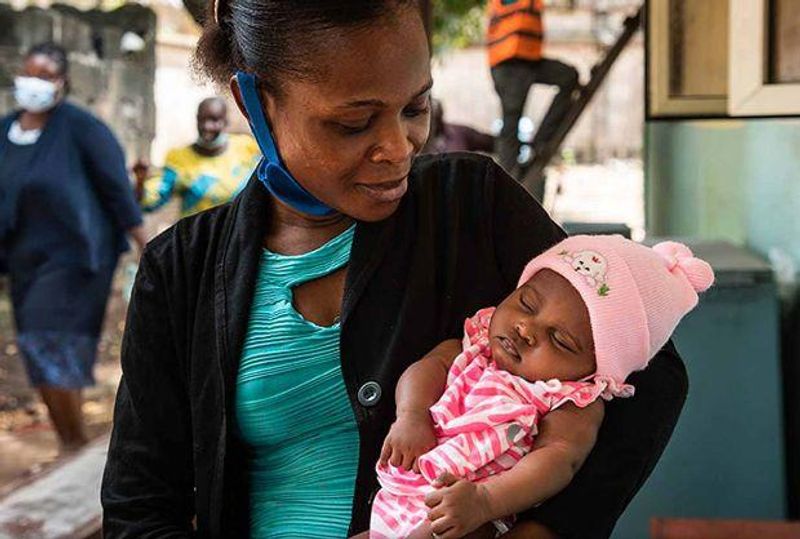Polio Can Be Eradicated. Let’s Make It Happen

Just under ten years ago, the Global Polio Eradication Initiative (GPEI) came close to achieving its goal. With endemic wild polio circulating in just two countries, Afghanistan and Pakistan, and a clear plan for eradication in place, there was light at the end of the tunnel.
But since 2020, COVID-19, civil unrest and wars have compounded the remaining challenges. In places where health infrastructures were already stretched thin, efforts stalled. And even in developed countries, polio started to crop up again. To finally bring polio to an end, GPEI launched a new strategy,1 targeting completion in 2026.
There’s no getting used to polio
“We’re at a critical moment in the polio endgame,” says Dominika Kovacs, Franchise Head, Polio, Pertussis and Hib Vaccines. ”There’s no prolonging this again. If we do, people everywhere may become resigned to the preventable loss of life and cases of paralysis. They may get complacent about getting children vaccinated before eradication is complete. That would be tragic for families and communities. And it could be catastrophic for global public health.”

Why are we so concerned?
So long as one person is infected by one poliovirus, the entire world remains at risk. And now polio has reappeared in places where it had already been beaten back:
- Africa was declared wild-polio free in 2020, but in 2021, a wild poliovirus case popped up in Malawi and spread into four cases in Mozambique.2
- The Russian invasion of Ukraine in early 2022 rocked already weak vaccination rates, raising risks of a significant outbreak in that now war-torn country.3
- In the UK, sewage testing has revealed poliovirus in London.4
- For the first time in more than a decade, poliovirus circulation has emerged in a New York county where vaccination rates are under the recommended level (80-90%).5,6
While each outbreak is distinct in characteristics and causes, they all show how fragile our gains against polio may be if we don’t fully complete the job of eradication.
So, what can finally bring polio to an end? While all the GPEI’s new strategies are critical, several stand out as particularly impactful.
Three impactful strategies for bringing polio to an end
1. Shift into emergency mode
Governments around the world went into emergency mode to beat back COVID-19. Why not do the same for polio?
“The impressive allocation of attention and resources that COVID received could clearly help to end polio,” Dominika adds. In fact, the infrastructures and clinical networks originally created to fight polio contributed to COVID-19 monitoring and vaccination programs, so it makes sense to put these resources back toward their original aim.1 “With polio, we have the solution in our hands: vaccines that work extremely well. If delivered and used appropriately, polio vaccines can protect up to nearly 100% of people throughout life. Eradication is within reach. Let’s make it happen.”
There’s no prolonging this again, or people may become resigned to the preventable loss of life and cases of paralysis

Dominika Kovacs
Franchise Head, Polio, Pertussis and Hib Vaccines
2. Adapt to reach “zero-dose” children
Polio vaccination is already built into many health services but between 2019 and 2021, basic childhood vaccination rates dropped 5%.7 And where vaccination programs are still lacking, many children never receive basic vaccination of any kind. These are the “zero-dose” children8 we must reach.
To close the gap, GPEI will look for alternative channels. One way will be to integrate immunization into basic government-delivered services, like clean water and sanitation.
“This approach could also serve as long-term investment by shoring up vulnerabilities in public health infrastructure. It would pay dividends by helping to protect against polio and other diseases,” Dominika said.
The lift for immunizing every child is heavier than before, and demands coordinated partnership between NGOs, governments, and industry. That’s why implementing the GPEI strategy will require prioritizing and adapting on regional, country, and community levels. The challenges will be in navigating the unique dynamics of each context.
3. Maximize the role of inactivated poliovirus vaccines
Public health providers must be armed with the right vaccines, in the right volumes, at the right times.
- The GPEI has invested in new oral poliovirus vaccines that help reduce the risks of oral polio vaccine-derived polio (cVDPV) outbreaks.1 For more information about cVDPV read last year’s Upshot here.
- The WHO stresses the critical importance of vaccinating with inactivated poliovirus vaccines (IPV) as part of full routine immunization. This can be given as standalone doses or in combination with other basic pediatric vaccines (e.g. in hexavalent vaccines that also cover pertussis, tetanus, diphtheria, Hib, and hepatitis B).9
- Strong global partnerships for sustainable, reliable, long-term supply and distribution of all vaccines will help ensure that once polio is gone, it stays gone.
We’ve delivered more than 1 billion doses of IPV-containing vaccines since the modern version was first licensed. We’ve provided IPV as a standalone vaccine for 40 years and since 2012, it’s been included in hexavalent vaccines that we distribute around the world.
Our goal is for every community, everywhere in the world, to have 80-90% of their people immunized against polio with inactivated poliovirus vaccines, year after year for a significant time even after eradication. That way, when poliovirus circulation ends, it can’t crop up again and surprise us.
Explore more

Poliomyelitis

We Can Do More to Eradicate Polio in Nigeria
